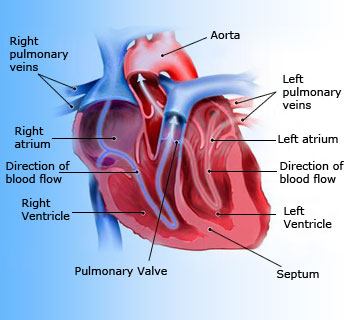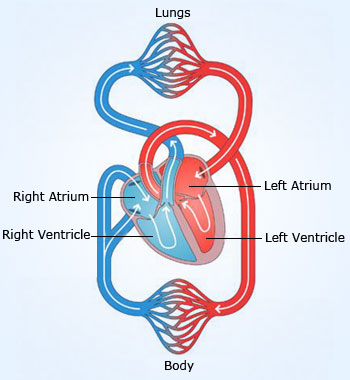 Heart – A complex and important one, but still just a pump.
The heart is a sort of a double pump, which circulates blood around the body to provide the oxygen and nutrients the body needs, while carrying away the waste. The movement of the blood through the heart and around the body is called circulation.
Heart – A complex and important one, but still just a pump.
The heart is a sort of a double pump, which circulates blood around the body to provide the oxygen and nutrients the body needs, while carrying away the waste. The movement of the blood through the heart and around the body is called circulation. The heart is a sort of a double pump, which circulates blood around the body to provide the oxygen and nutrients the body needs, while carrying away the waste.
The movement of the blood through the heart and around the body is called circulation. The blood vessels are the part of the circulatory system that transports blood throughout the body. There are three major types of blood vessels: the arteries, which carry the blood away from the heart; the capillaries, which enable the actual exchange of water and chemicals between the blood and the tissues; and the veins, which carry blood from the capillaries back toward the heart.
Chambers and valves of heart:
The heart has four chambers. The two ventricles (right and left) are muscular chambers that propel the blood out of the heart (the right ventricle to the lungs, and the left ventricle to all other organs). The two atria (right and left) hold the blood returning to the heart and at just the right moment empty into the right and left ventricles. The four heart valves (tricuspid, pulmonic, mitral and aortic) keep the blood moving in the right direction through the heart.
 Blood vessels play a crucial role in circulation
The body's main arteries and veins branch out from the heart to every part of the body. The arteries carry blood away from the heart, and the veins bring blood back to the heart
Blood vessels play a crucial role in circulation
The body's main arteries and veins branch out from the heart to every part of the body. The arteries carry blood away from the heart, and the veins bring blood back to the heart Blood vessels:
The body's main arteries and veins branch out from the heart to every part of the body. The arteries carry blood away from the heart, and the veins bring blood back to the heart. With the exception of the pulmonary blood vessels, all the arteries carry oxygenated blood and all the veins carry deoxygenated blood. The oxygen is carried by red blood cells, which also carry the waste gas carbon dioxide in the deoxygenated blood.
Blood flow:
The right and left sides of the heart have separate functions. The right side of the heart collects oxygen – poor blood from the body and pumps it to the lungs where it picks up oxygen and releases carbon dioxide. The left side of the heart then collects oxygen – rich blood from the lungs and pumps it to the body so that the cells throughout your body have the oxygen they need to function properly. All the blood enters the right side of the heart through two veins: The superior vena cava(SVC) and the inferior vena cava(IVC). The SVC collects blood from the upper half of the body. The IVC collects blood from the lower half of the body. Blood leaves the SVC and the IVC and enters the right atrium (RA). When the RA contracts, the blood goes through the tricuspid valve and into the right ventricle(RV). When the RV contracts, blood is pumped through the pulmonary valve, into the pulmonary artery(PA) and into the lungs where it picks up oxygen. Blood now returns to the heart from the lungs by way of the pulmonary veins and goes into the left atrium(LA). When the LA contracts, blood travels through the mitral valve and into the left ventricle(LV). The LV is a very important chamber that pumps blood through the aortic valve and into the aorta. The aorta is the main artery of the body. It receives all the blood that the heart has pumped out and distributes it to the rest of the body. The LV has a thicker muscle than any other heart chamber because it must pump blood to the rest of the body against much higher pressure in the general circulation (blood pressure).